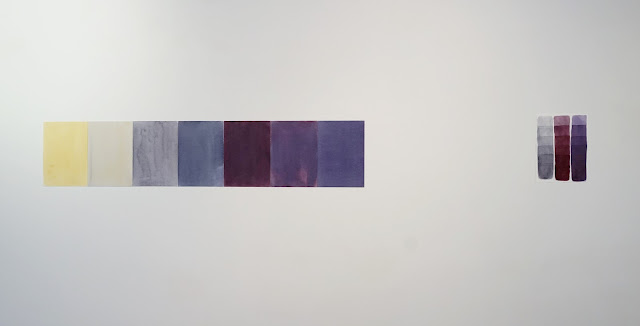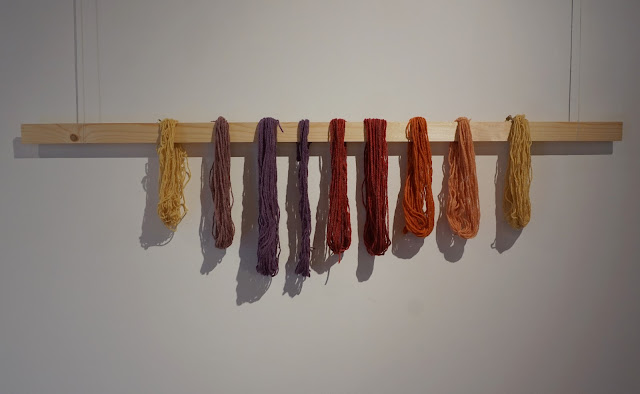9 colours, 3 geographies establishes a link between Berlin (Germany), Bío-Bío (Chile) and Covilhã (Portugal), through the chromatic potential of plants that inhabit these three regions.
It presents a series of pictorial and dyeing experiments, respectively on fabric and paper, designed with paints and colour baths extracted from plants and vegetables. This working method, which began in Berlin, where the paints were made only from vegetable peelings, berries and weeds, seeks to follow a logic of composting and sustainable collection. It draws attention to plants or surplus vegetables that often go unnoticed, opening up a new perspective on their potential.
In Berlin, the territories presented are urban areas covered in spontaneous plants. In the case of Bío-Bío, the plants refer to ancestral dyeing traditions that are still in force and at risk due to forestry companies affecting the native flora. In Covilhã, the Ribeira da Goldra was colour mapped, alluding to the region's textile identity.
In 9 colours, 3 geographies, the aim is to reflect on issues of environmental protection and sustainability, while at the same time opening up a new perspective on the landscape, experiencing and interpreting it through the chromatic materiality of the flora that inhabits it.
Exhibition view 9 Cores, 3 Geografias, Wool Museum, Royal Veiga Factory, Covilhã, Portugal, 2024.
Exhibition view 9 Cores, 3 Geografias, Wool Museum, Royal Veiga Factory, Covilhã, Portugal, 2024.














No comments:
Post a Comment